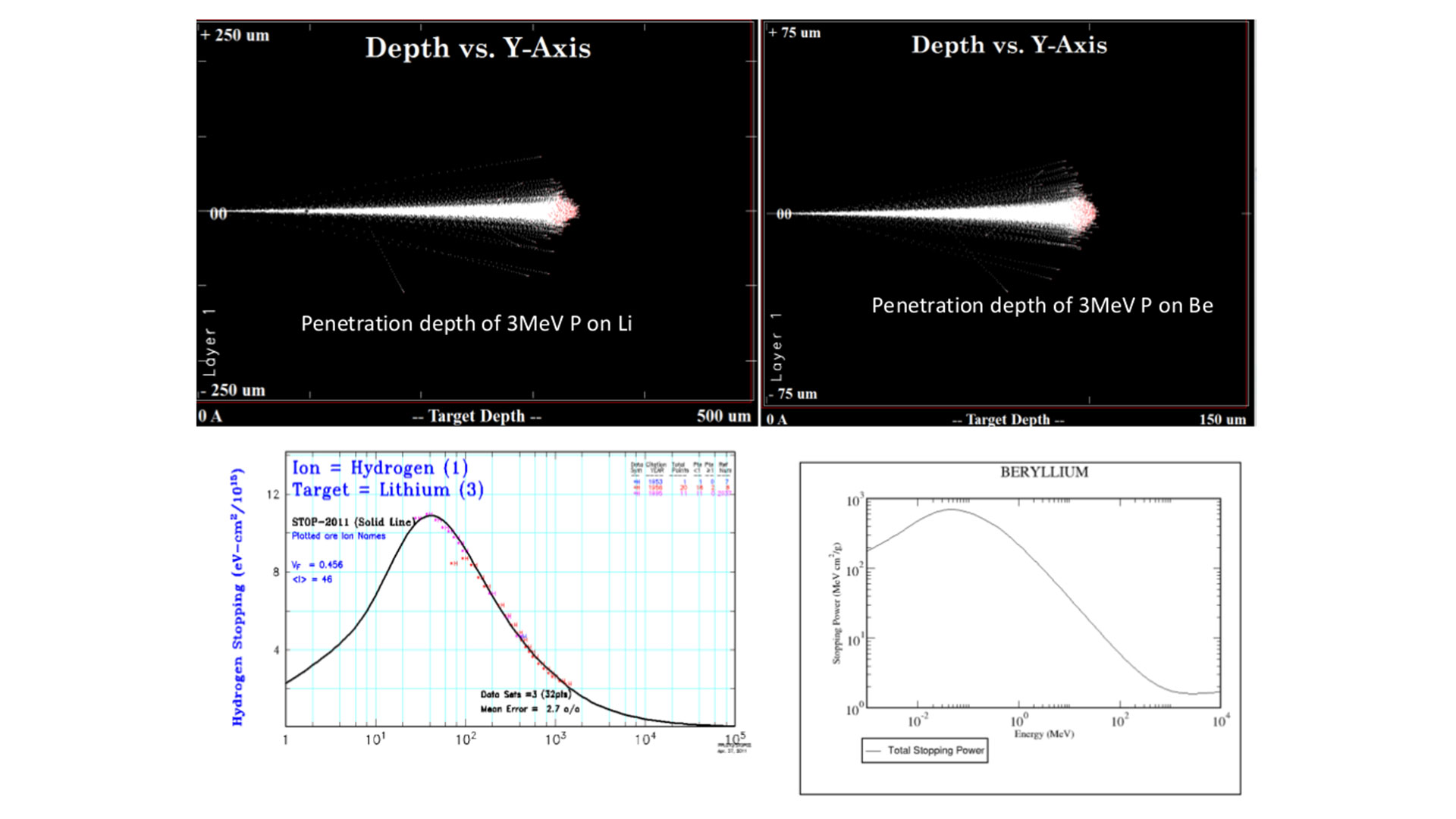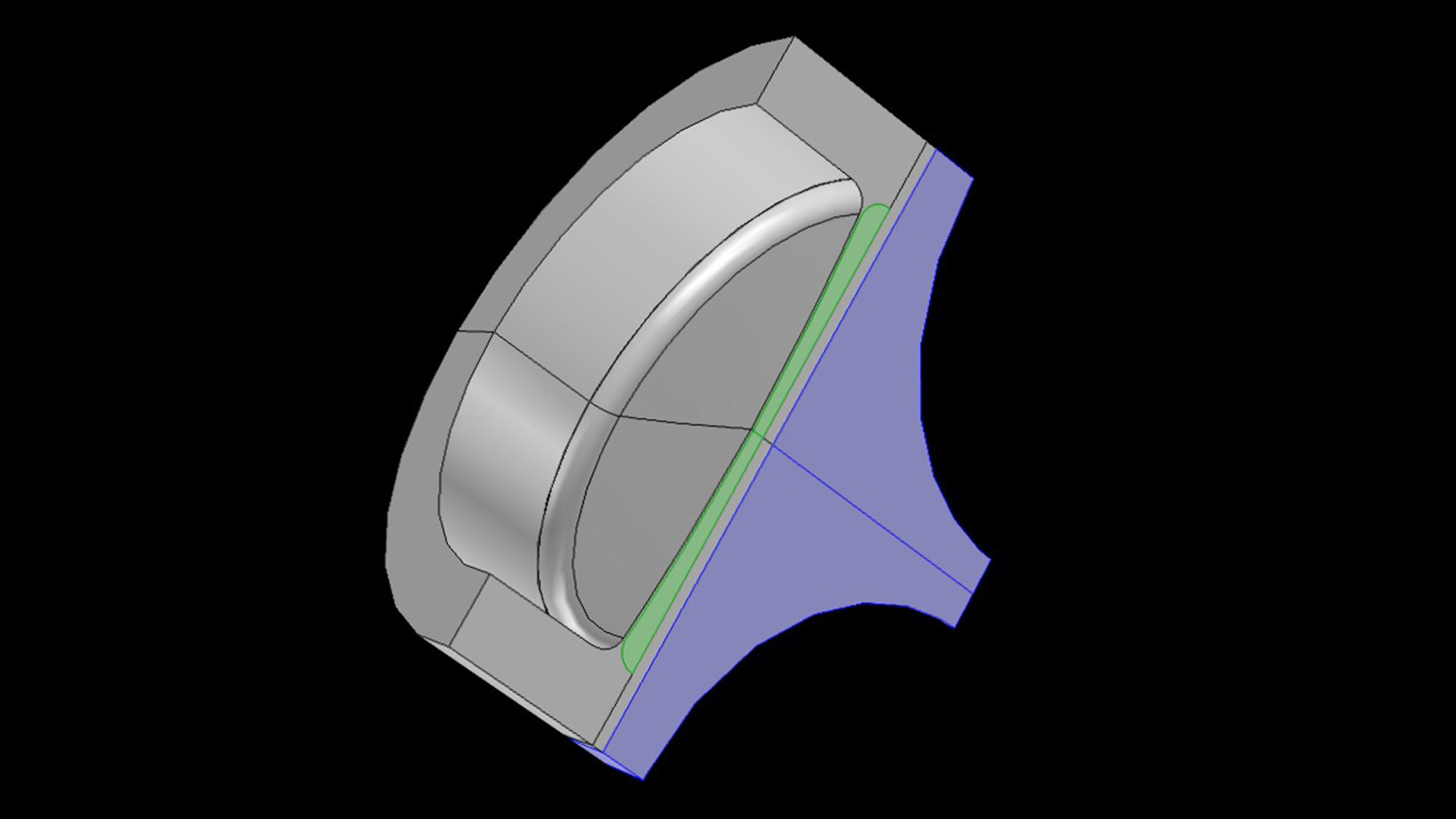This research focuses on novel neutron sources and interactions for security screening and medical isotope applications. Key to the development of technology for these applications is the availability of neutron sources. Current technology for sources has focused on;
- Spallation - requires large expensive infrastructure, costing billions of pounds, as well as a very large geographical footprint.
- Isotopes - requires having a constant source of neutrons (N) which can't be turned off, presenting a large number of safety issues, and produces only low energy N.
- Nuclear reactions - such as Tritium's (T), T(D,n)4He, suffer from a number of issues limiting performance and use: lifetimes are limited to ~ 10^9 shots, T radiotoxicity results in difficult handling and registration requirements even with small sample sizes, making transportation and use of systems that create or use tritium very restrictive. These approaches cannot produce short pulse lengths or high rep rates, which are ideally required for security screening.
Our research explores the use of conceptual compact accelerators to produce; compact, cheap, low intensity N source for security applications. Generating neutrons from non-tritium nuclear reactions, such as O(D,N).
This work has been supported by over £ 145,000 funding from STFC.
Security
Over 90% of all global freight is transported through seaports, the port of Felixstowe alone handles over 3 mil- lion containers each year. Apart from manual searches and intelligence gathering, the detection of contraband and security threats crossing national borders depends primarily on X- Ray interrogation. X-Ray interrogation can be defeated by shielding or disguising objects allowing smugglers to pass contraband through national borders undetected. In addition X-Ray interrogation systems often require a human operator to identify the presence of any threat or contraband. The difficulty of identifying threats leads to a large number of mistakes For example a United States Federal Aviation Authority report found that human operators of X-Ray interrogation systems only identified approximately 20% of threats.
Due to the nature of neutron interactions they can interrogate the contents of containers not suited to X-Rays. X-Rays are readily absorbed by high Z materials such as F e and P b whereas these are fairly transparent to neutrons. Neutron interactions with materials produces a unique signature of the atomic makeup of the material, allowing an almost automated approach to identifying the contents of concealed freight.
Medical
If you have a heart attack, it's fairly likely that the doctor will inject you with a Technetium-99 tracer. Technetium is supplied to hospitals by packaging Molybdenum-99 into a generator: Molybdenum-99 decays into Technetium in the generator over about a week, and the Technetium extracted and used for diagnostic procedures.
But there's a problem. Right now, large quantities of Molybdenum-99 can only be made in a few specialised nuclear reactors, all of which are becoming too old to be run safely, and recent failures in the two principal reactors have created a crisis in supply, at a time when there is an ever-growing demand. To put it into context, 36 million nuclear medicine procedures were carried out last year, most of which need Technetium.
We are looking at a new method to produce Technetium using a particle accelerator. Using similar technology to that used in particle colliders like the LHC, to accelerate ions into a target to generate neutrons. Like in the reactors they intend to replace, these neutrons can then be used to make Molybdenum-99. Although an RFQ cannot make as many neutrons as a reactor, it is much cheaper to build and operate, and so many could be built around the country to provide a domestic supply of Molybdenum-99, which the UK doesn't have at the moment despite using over a million doses of Technetium a year.


